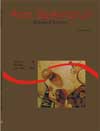<b>Abundance and temporal distribution of larvae of <em>Pachyurus bonariensis</em> Steindachner, 1879 (Perciformes, Sciaenidae), in a bay of the matogrossense pantanal</b> - DOI: 10.4025/actascibiolsci.v31i1.306
Abstract
With the objective to analyze the temporary distribution of Pachyurus bonariensis larvae and its relationship with some environmental variable, collections were carried in the Sinhá Mariana bay, Mato Grosso State, between March/2000 and March/2004, at 4:00 p.m. and at 10:00 p.m. Simultaneously, water samples were obtained to determine temperature of the water, dissolved oxygen, pH and electric conductivity. The largest densities were verified between the months of October and January, suggesting to be this the main period of reproduction of the species. However, larvae in preflexion and flexion were also found in the months of winter, possibly associated to the favorable conditions for the reproduction. Individuals of all of the stages were present, thus it is probable that the whole life cycle happens inside of the bay. The density of larvae more developed in the surface is larger at night, while the initial larvae are found in the surface in both schedules, thus the degree of larval development influences in the distribution pattern of the species in the column of water.Downloads
Download data is not yet available.
Published
2009-04-14
How to Cite
Santin, M., Bialetzki, A., Assakawa, L. F., & Taguti, T. L. (2009). <b>Abundance and temporal distribution of larvae of <em>Pachyurus bonariensis</em> Steindachner, 1879 (Perciformes, Sciaenidae), in a bay of the matogrossense pantanal</b> - DOI: 10.4025/actascibiolsci.v31i1.306. Acta Scientiarum. Biological Sciences, 31(1), 65-71. https://doi.org/10.4025/actascibiolsci.v31i1.306
Issue
Section
Ecology and Limnology
DECLARATION OF ORIGINALITY AND COPYRIGHTS
I Declare that current article is original and has not been submitted for publication, in part or in whole, to any other national or international journal.
The copyrights belong exclusively to the authors. Published content is licensed under Creative Commons Attribution 4.0 (CC BY 4.0) guidelines, which allows sharing (copy and distribution of the material in any medium or format) and adaptation (remix, transform, and build upon the material) for any purpose, even commercially, under the terms of attribution.
Read this link for further information on how to use CC BY 4.0 properly.
0.6
2019CiteScore
31st percentile
Powered by 

0.6
2019CiteScore
31st percentile
Powered by 











1.png)




3.png)













